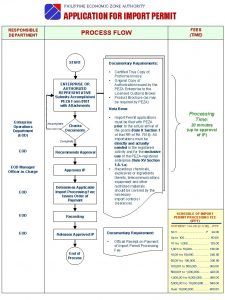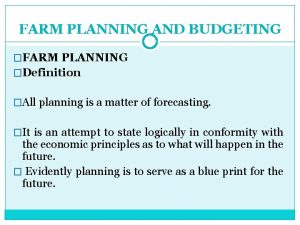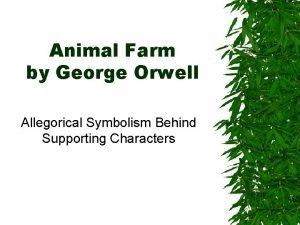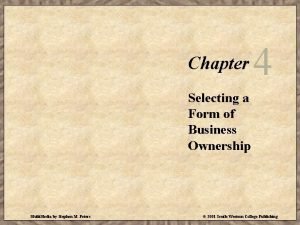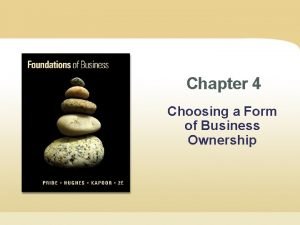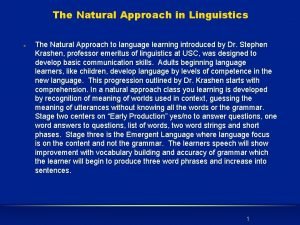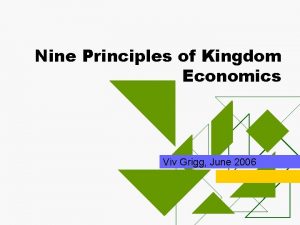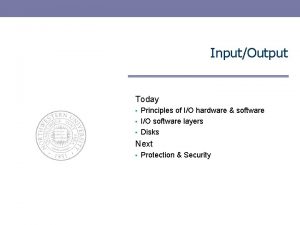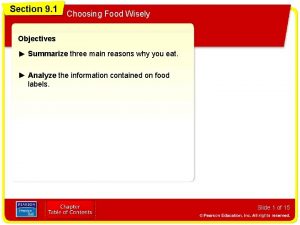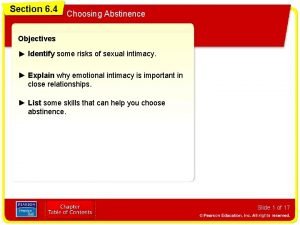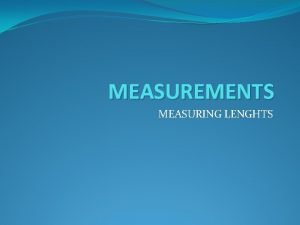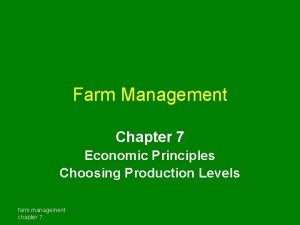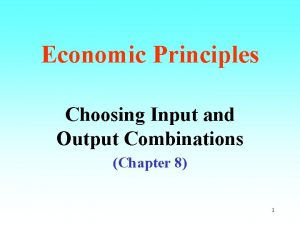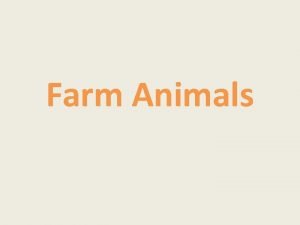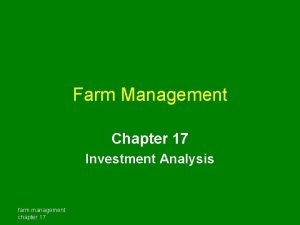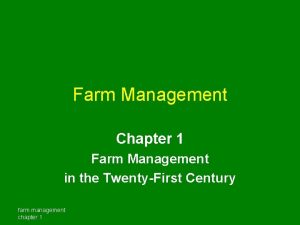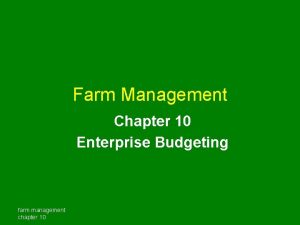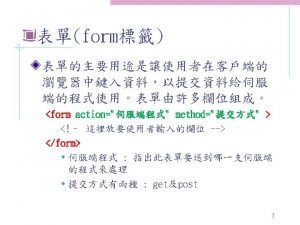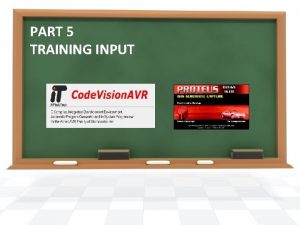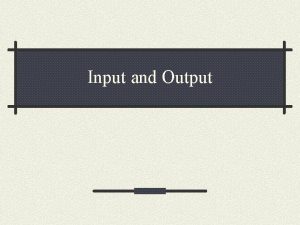Farm Management Chapter 8 Economic Principles Choosing Input






















- Slides: 22

Farm Management Chapter 8 Economic Principles Choosing Input and Output Combinations farm management chapter 8

Chapter Outline • Input Combinations • Enterprise Combinations farm management chapter 8 2

Chapter Objectives 1. To explain the use of substitution in economics and decision making 2. To demonstrate how to compute a substitution ratio and a price ratio for two inputs 3. To use the input substitution and price ratios to find the least-cost combination of two inputs 4. To describe the characteristics of competitive, supplementary, and complementary enterprises 5. To show the use of the output substitution and price ratios to find the profit-maximizing combination of two enterprises farm management chapter 8 3

Input Combinations Most products require two or more inputs, and the manager may choose the input combination or ratio to use. The economic question is whether one input can be substituted for another to reduce the cost. farm management chapter 8 4

Types of Input Substitution • Constant rate (perfect substitution) • Decreasing rate • No substitution farm management chapter 8 5

Figure 8 -1 Three possible types of substitution farm management chapter 8 6

Input Substitution Ratio Input substitution ratio = amount of input replaced amount of input added farm management chapter 8 7

Input Price Ratio Input price ratio = price of input being added price of input being replaced farm management chapter 8 8

Decision Rule input substitution ratio = input price ratio If they cannot be exactly equal because of the choices available in the table, get as close as possible without letting the price ratio exceed the substitution ratio. farm management chapter 8 9

Table 8 -1 Selecting a Least-Cost Feed Ration farm management chapter 8 grain at 4. 4¢ and hay at 3. 0¢ 10

With Different Types of Substitution • With a constant rate of substitution, the least-cost combination will be all of one input and none of the other (unless the price ratio is exactly equal to the constant rate of substitution). • With a decreasing rate of substitution, the least-cost combination will usually include some of each input. farm management chapter 8 11

Enterprise Combinations Another decision that must be made is the combination of enterprises to produce to maximize profits. If one or more inputs is limited, there is an upper limit on how much can be produced. farm management chapter 8 12

Enterprise Relationships The first step in determining the profit-maximizing combination of enterprises is to determine the physical relationship among the enterprises. farm management chapter 8 13

Types of Relationships • Competitive: output of one enterprise cannot be increased unless output of the other decreases • Supplementary: more output from one enterprise can be added without a change in the level of the other enterprise • Complementary: as output of one enterprise increases, output of the other increases also farm management chapter 8 14

Competitive Enterprises Competitive enterprises may have constant substitution or increasing substitution. farm management chapter 8 15

Figure 8 -2 Production Possibility Curves for Competitive Enterprises farm management chapter 8 16

Figure 8 -3 Supplementary & complementary enterprise relationships farm management chapter 8 17

Output Substitution Ratio = quantity of output lost quantity of output gained farm management chapter 8 18

Output Price Ratio = price of output gained price of output lost farm management chapter 8 19

Decision Rule output substitution ratio = output price ratio If no available combination makes these exactly equal, get as close as possible without letting the price ratio drop below the substitution ratio. farm management chapter 8 20

Table 8 -2 Profit-Maximizing Enterprise Combination corn at $2. 80/bu, wheat at $4. 00/bu farm management chapter 8 21

Summary This chapter emphasizes the use of substitution principles to decide how and what to produce. To decide how to produce, the manager finds the least-cost combination of inputs. To decide what to produce, the manager finds the profit-maximizing combination of enterprises. farm management chapter 8 22
 Peza 8106
Peza 8106 Physical farm planning
Physical farm planning What was the problem with the farm tools in animal farm
What was the problem with the farm tools in animal farm Mollie animal farm represents
Mollie animal farm represents Chapter 1 choosing your career
Chapter 1 choosing your career Chapter 4 choosing a form of business ownership
Chapter 4 choosing a form of business ownership Chapter 4 choosing a form of business ownership
Chapter 4 choosing a form of business ownership Chapter 21 lesson 2 choosing to live alcohol free
Chapter 21 lesson 2 choosing to live alcohol free Chapter 20 lesson 1 the health risks of tobacco use
Chapter 20 lesson 1 the health risks of tobacco use Economic growth vs economic development
Economic growth vs economic development Economic growth and development
Economic growth and development Lesson 2 our economic choices
Lesson 2 our economic choices Yang bukan merupakan peripheral output adalah
Yang bukan merupakan peripheral output adalah Finely tuned input and roughly tuned input
Finely tuned input and roughly tuned input Five kingdom economic principles
Five kingdom economic principles Basic principles of cost management
Basic principles of cost management Principle of input design
Principle of input design Principles of input output software
Principles of input output software Input design objectives
Input design objectives What are the inputs and outputs of system design?
What are the inputs and outputs of system design? Choosing foods wisely quiz
Choosing foods wisely quiz Choosing abstinence quiz
Choosing abstinence quiz Choosing appropriate metric units of measurement
Choosing appropriate metric units of measurement
